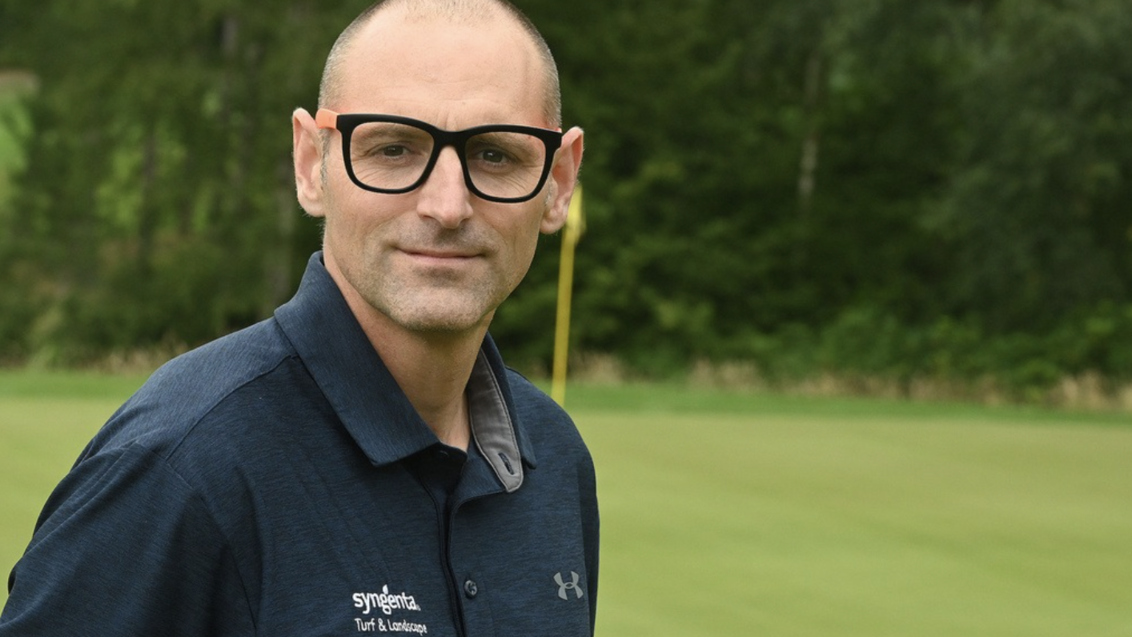Tournament conditions? Let’s keep it real.

As The Open returns to Royal St George’s Golf Club, I thought I’d take some time to draw people’s attention to the additional work that goes into preparing courses for major championships and the widening gap between the conditions presented for televised tournaments and the ability of the typical club to deliver these standards.
I guess it’s inevitable that with my background of managing and supporting greenkeeping teams at both ‘normal’ and ‘tournament’ golf events, my focus is more on the turf than the golf.
Greenkeeping teams around the country do a great job preparing high quality playing surfaces all year round. However, I often see them unfairly compared to tournament events by an uninformed golfing public and I worry about the impact.
As my career has evolved so has my mindset. As an ambitious and driven young greenkeeper, the conditions that were achieved at tournaments were conditions to aspire to. But 29 years on, my mindset has changed, the climate has changed and the number of tools that turf managers have available to them has evolved, too.
Through the 1990’s tournament conditions were achieved by creating great putting surfaces with little regard to plant health. This was supported by a programme of products containing active ingredients such as Iprodione or Chlorpyrifos to ensure we held any fungal or insect attacks at bay. These products have now been removed from the market as the UK continues to place a higher value on both human and environmental safety.
Over the past two decades, we have evolved and now have a far greater ability to manage the health of our turfgrass. We have made many advancements including better monitoring, better machinery, and improved plant health products. These all offer marginal turf health gains that, when bolted together in the correct way specific to your site, climatic conditions and environment, can add up to significant gains in turf quality.
In recent years we’ve had all these advancements available to us coupled with chemistry that would allow us to manage turf on the edge. We could push turf to the limit and then just about catch ourselves before we fall off the edge of that turfgrass cliff.
But the products that saved us then, have now gone. The face of turfgrass fungicides has changed over the last few years. It’s been a slow transition from chemistry highly loaded with active ingredient (the engine of the product) to low loaded chemistry with a greatly reduced impact on human health and the environment. This transition has been slow, and the industry has learned to apply the newer products with the right timings and good application techniques. Coupled with all the aforementioned turf health techniques, we can still deliver the golf course the customer desires.
So why has my mindset changed toward televised tournament golf?
I’ve worked enough of these events to respect and understand the hard work that goes into them but also the advantages that tournament golf courses have over the vast majority of standard courses. These events are the club’s opportunity to market their key asset to the world and that is worth the investment and commitment necessary to show their product off at its very best.
For the normal golf club, the standards achieved at these events on television have become an unrealistic aspiration.
During the past decade, the industry has been in the sweet spot for presenting high quality turf.
We’ve had all those advancements in technologies to help look after the turf health at the same time as having access to all the chemistry we needed. The combination was there to be seen on our 52 inch flat screen HD TVs and our home courses.
The televised events and the world’s best will still commit to a wholesale approach of investing in their key asset at times when there are marketing opportunities. The dangerous perception to the outside world is that the playing conditions presented are normal and a standard to aspire to.
Many of my friends and associates will be arriving at Royal St George’s to bolster the huge support team and play their part in this great golfing event. Royal St George’s will also have made the most of reduced play during the build up to the event – and machinery manufacturers will be very happy to offer as much short-term loan equipment as they need.
Comparing televised golf tournaments to our own club in this modern era is like watching the Olympics and asking why our children can’t run a sub 10-second 100 meters. It’s simply not a fair comparison.
Large golf events will continue to deliver outstanding conditions; they have all the resources they could want and all the support they could need and normal golf clubs will continue to aspire to emulate their heroes but the future looks a little different for them.
The difference will begin to widen as the majority of golf clubs must switch the focus from prioritising great playing surfaces to prioritising good plant health to sustain good playing conditions year-round.
But the desire will be there for golf clubs to continue to deliver tournament conditions. And while I feel that gap will widen, the clubs who are serious about delivering high standards are the ones investing in their teams’ development, their teams’ infrastructure and the equipment they need.
My worry is that ambitious greenkeeping teams will drive themselves into the ground trying to achieve the unachievable for those few members who don’t understand the resources available to these high-end, tournament venues.

